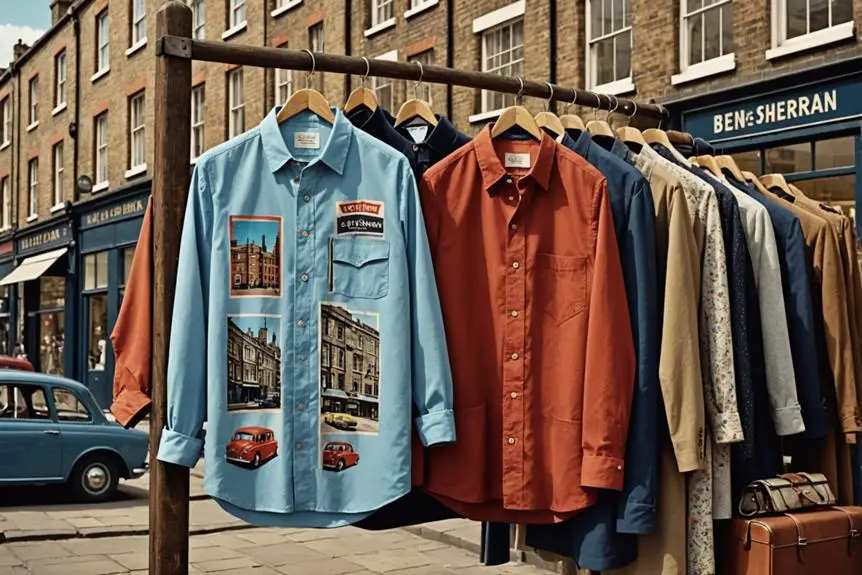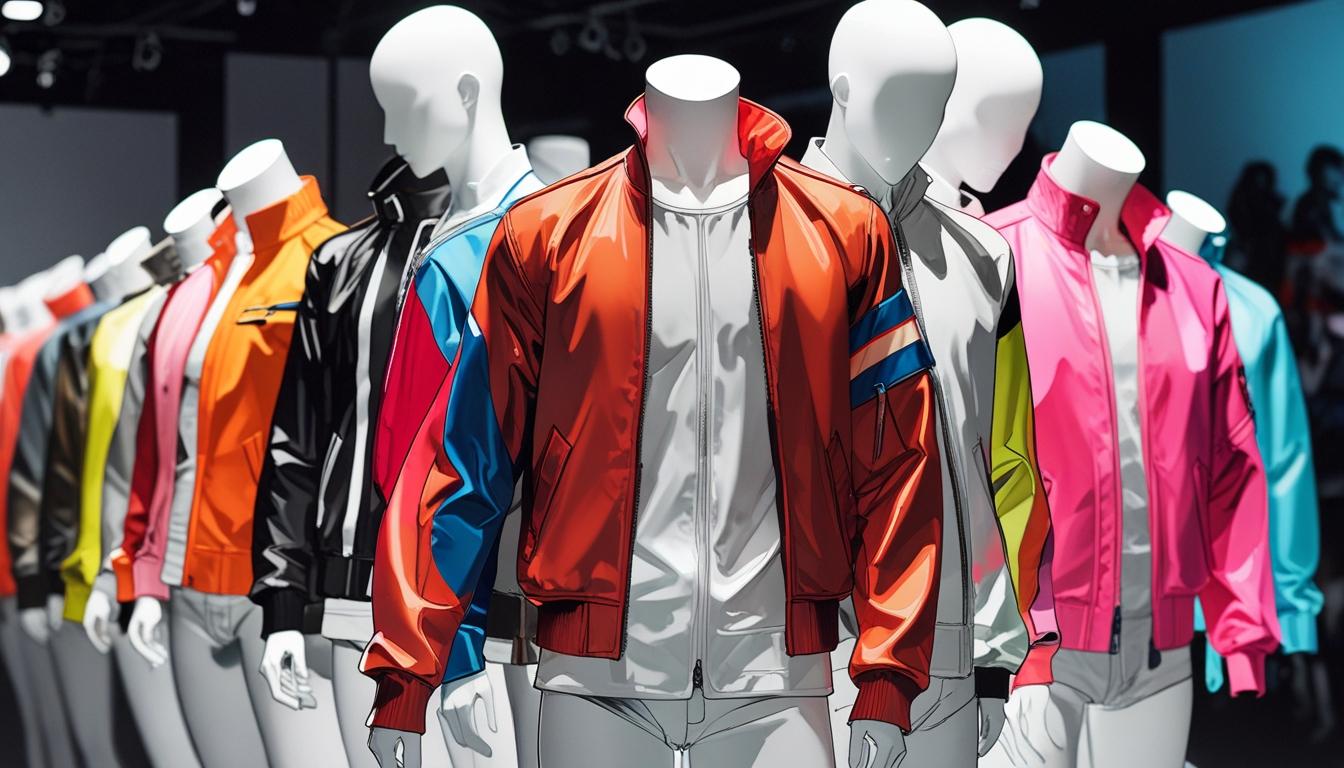When you delve into the history of Ben Sherman, you'll uncover its origins in 1963, drawing inspiration from the American Ivy League and the vibrant mod culture of Britain. The brand quickly gained iconic status among jazz and mod enthusiasts, known for its distinct shirts that feature signature designs. Over the decades, Ben Sherman has evolved, navigating changes in ownership and revitalizing its image through influential music movements like 2-Tone. Today, the brand remains dedicated to quality and originality, successfully appealing to new generations. This legacy highlights the dynamic relationship between fashion and identity, showcasing a fascinating journey that continues to unfold.
Founding of Ben Sherman
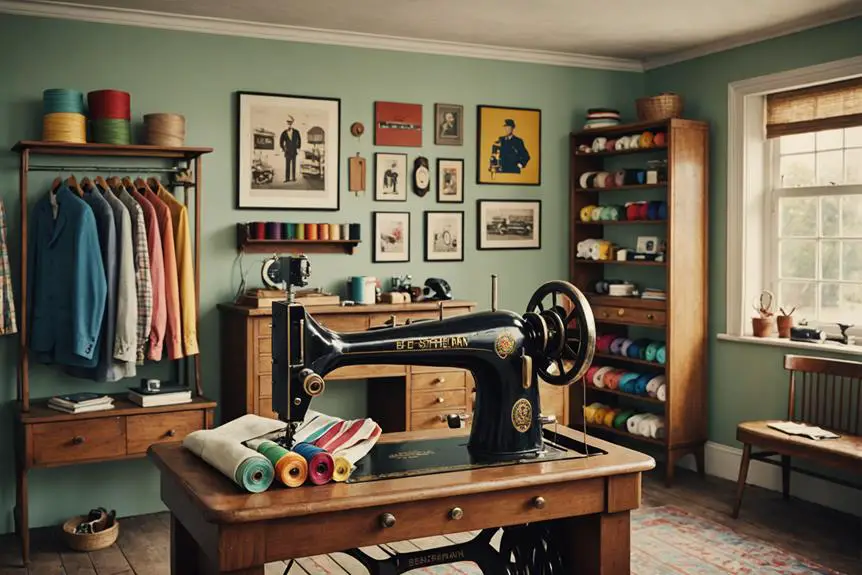
The founding of Ben Sherman in 1963 marked a pivotal moment in British fashion, driven by Arthur Benjamin Sugarman's vision to blend American style with British sensibilities. Based in Brighton, Sugarman focused on creating high-quality shirts that drew inspiration from the American Ivy League. This unique approach resonated with London jazz fans, who sought out the brand's Oxford-collared shirts, leading to its adoption by the burgeoning mod movement. The brand's early shirts featured a distinctive iconic logo that became synonymous with mod culture. The quality of Ben Sherman's clothing manufacturing set it apart in a competitive market. The meticulous craftsmanship and attention to detail appealed to a youth culture craving individuality and style. By 1967, the brand further established itself with the opening of its first official store on Duke Street in Brighton, marking its shift from production to retail.
Evolution Through the Decades
Over the decades, Ben Sherman has consistently adapted to the changing tides of fashion and youth culture, guaranteeing its relevance in the competitive landscape of British apparel. Founded in 1963, the brand quickly became a favorite among youth cultures like the mods and skinheads, who appreciated its quality and signature Oxford cloth. The late 1960s and early 1970s saw significant growth, highlighted by the opening of its first store in Brighton and a staggering order of a million yards of fabric in 1970.
As the 1980s and 1990s unfolded, Ben Sherman remained in tune with the evolving music movements, such as 2-Tone and Britpop, which helped solidify its appeal among younger consumers. The early 2000s brought management buyouts, allowing Ben Sherman PLC to strengthen its foothold in the global market.
More recently, the brand showcased its commitment to innovation and modern relevance by outfitting Team GB for the 2021 Tokyo Olympics and gearing up for the 2024 Paris Olympics. This adaptability guarantees that Ben Sherman continues to be a crucial player in British fashion, resonating with new generations of style-conscious individuals.
Ownership Transitions
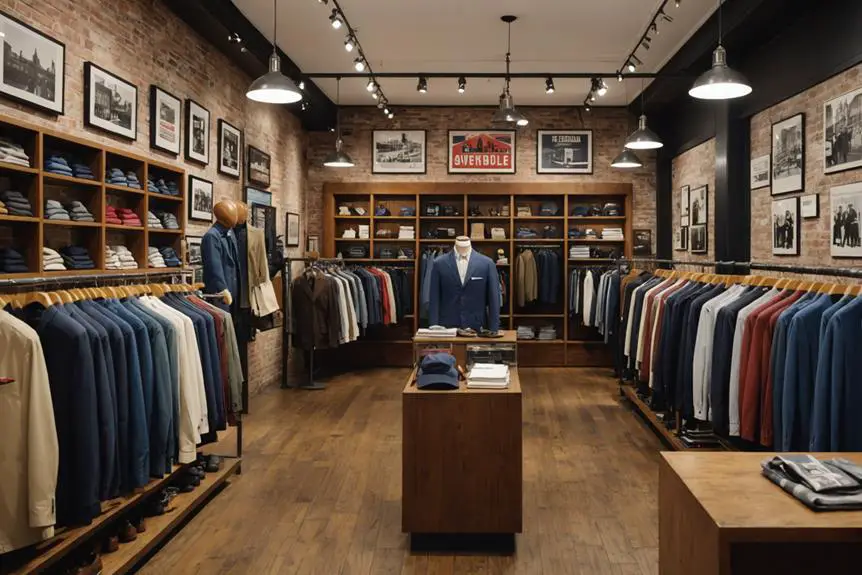
Ownership changes have played an essential role in shaping the trajectory of Ben Sherman, influencing its market strategy and brand identity. The brand's journey began with Arthur Benjamin Sugarman, who sold his creation in 1975 to retire in Australia. This marked the first significant alteration in ownership, but it was the management buyout in 1993, backed by British investor 3i, that represented a significant turning point.
In 2000, a second management buyout led to the establishment of Ben Sherman PLC, setting the stage for further growth. In mid-2004, Oxford Industries acquired the brand for £80 million, facilitating its expansion into new markets. The ownership alterations continued when Marquee Brands purchased Ben Sherman in 2015 for £41 million. This deal included a licensing agreement with Baird Group for UK operations, ensuring the brand's continued presence in its home market.
Here's a summary of these ownership alterations:
| Year | Ownership Change | Impact on Brand |
|---|---|---|
| 1975 | Sold by Arthur Sugarman | Initial alteration |
| 1993 | Management buyout | Significant turning point |
| 2000 | Second management buyout | Established PLC |
| 2004 | Acquired by Oxford Industries | Expansion into new markets |
| 2015 | Purchased by Marquee Brands | Maintained UK market presence |
Cultural Significance
How did Ben Sherman evolve into a cultural icon within Britain's youth movements? The brand's roots in the mod movement of the 1960s laid the groundwork for its significance in British youth culture. Known for its quality and unique style, Ben Sherman shirts became essential attire for mods, symbolizing a distinct identity. This influence didn't stop there; as punk and 2-Tone emerged, the brand seamlessly integrated into these scenes, further solidifying its status.
The portrayal of Ben Sherman in the 2006 film "This is England" reinforced its connection to cultural narratives surrounding British youth identity, showcasing how deeply intertwined the brand is with the evolving fashion landscape. When you compare Ben Sherman to other iconic labels like Fred Perry and Lonsdale, it's clear that the brand holds a significant role in shaping youth subcultures.
Throughout its history, Ben Sherman has maintained a legacy of originality and modernism, appealing to generations seeking style and cultural connection. This blend of fashion and identity guarantees that Ben Sherman remains not just a clothing brand, but a symbol of cultural significance for British youth, resonating across diverse movements.
Recent Brand Developments
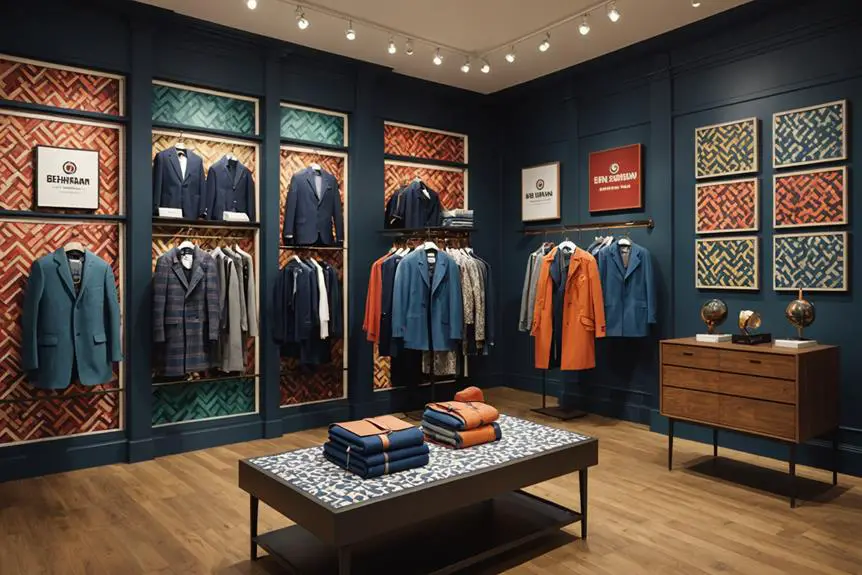
Building on its rich cultural significance, Ben Sherman has made notable strides in recent years, reflecting a keen awareness of contemporary fashion demands and athletic trends. In 2021, the brand designed outfits for Team GB at the Tokyo Olympics, seamlessly blending modern athletic wear with its storied heritage. This commitment to sports continues as Ben Sherman prepares to outfit Team GB for the upcoming 2024 Paris Olympics, positioning the brand at the forefront of high-profile sporting events.
In March 2024, Ben Sherman launched its first golf-focused apparel collection, expanding its offerings to engage sports enthusiasts. This innovative approach underscores the brand's dedication to craftsmanship while enhancing its relevance in today's market. Recent collections not only celebrate Ben Sherman's Mod heritage but also demonstrate a strategic alignment with current fashion trends, appealing to a broader audience.
As Ben Sherman revitalizes its image, it emphasizes quality and innovative design, attracting new consumers while honoring its legacy. By intertwining sports and style, the brand reaffirms its status as a dynamic player in both the fashion and athletic apparel arenas.
Signature Shirt Features
While the essence of Ben Sherman lies in its rich history, the brand's signature shirts embody a perfect blend of style and craftsmanship that resonates with modern consumers. The hallmark of these shirts is their distinctive collar, which combines aesthetic appeal with functionality. The button-down collar features a box pleat and a loop at the back, enhancing both style and practicality.
Signature Shirt Features
| Feature | Description |
|---|---|
| Distinctive Collar | Two-piece structure for enhanced aesthetic appeal |
| Collar Styles | Finger lengths range from 1-finger to 4-finger |
| Iconic Patterns | Includes mini-check patterns and candystripe designs |
| Construction Quality | High-quality techniques like French seams for durability |
These elements contribute to the Ben Sherman shirt's versatility, making it suitable for various occasions, from casual outings to formal events. The combination of craftsmanship and high-quality construction guarantees that each shirt not only looks good but also stands the test of time. With a focus on durability and style, Ben Sherman continues to offer shirts that meet the diverse fashion preferences of today's consumers.
Legacy and Influence
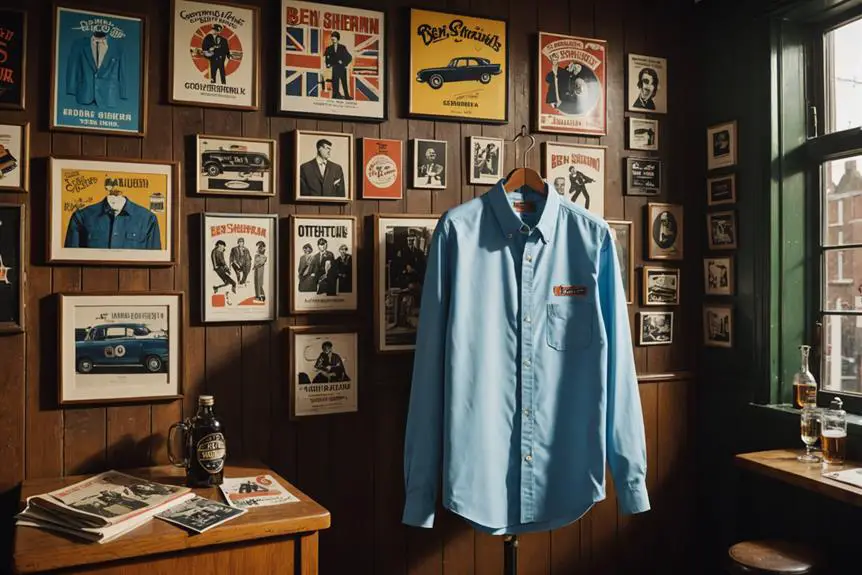
Ben Sherman shirts have transcended mere fashion items; they've become symbols of cultural movements that have shaped British youth identity over the decades. You can trace the brand's influence back to the Mod movement of the 1960s, where its iconic shirt represented modernism and self-expression. This connection to British youth culture is profound, as the shirt became a staple for those seeking originality and quality in their wardrobe.
Over the years, Ben Sherman has become intertwined with various movements, including 2 Tone and Britpop, each time reflecting the evolving landscape of youth identity. Its cultural significance is further solidified through its appearances in films like "This is England," which highlight its relevance in contemporary narratives.
Despite facing challenges, such as a downturn in 2015, Ben Sherman has revitalized its image by embracing its Mod heritage while introducing modern designs, including its partnership with Team GB for the Olympics. This adaptability guarantees the brand remains a staple across generations, embodying a legacy that champions quality and originality. As you wear a Ben Sherman shirt, you're not just donning a piece of clothing; you're participating in a lasting cultural dialogue.
Frequently Asked Questions
What Is the Story of Ben Sherman?
You'll find that Ben Sherman's story intertwines fashion, youth culture, and music movements. Its distinctive designs reflect a commitment to quality and style, evolving through ownership changes while remaining a cultural icon over the decades.
Who Owns Ben Sherman Now?
Ben Sherman's currently owned by Marquee Brands, which oversees its global brand management. In the UK, the Baird Group handles retail and distribution, ensuring the brand remains accessible and relevant to its consumers.
Is Ben Sherman a Cool Brand?
You'll find Ben Sherman resonates with contemporary youth culture, blending classic style and modern trends. Its iconic shirts and collaborations keep it relevant, making it a go-to choice for those wanting to express individuality and fashion sense.
Is Ben Sherman a Designer?
Yes, you could say Ben Sherman is a designer brand. It emphasizes innovative styles, quality fabrics, and craftsmanship, appealing to various fashion cultures. Its distinct designs reflect a modern aesthetic while honoring its original ethos.
